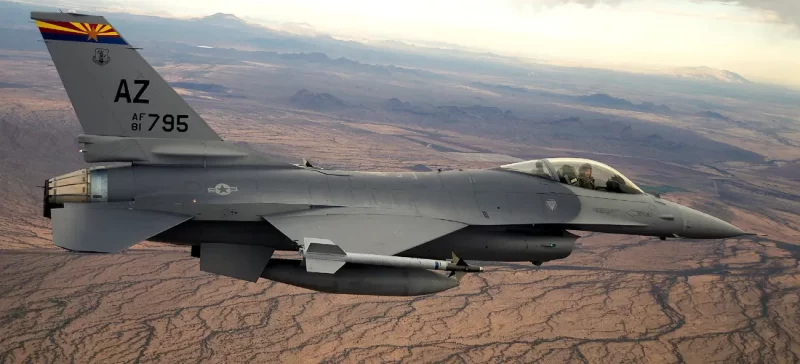Learning the F-16 Viper – It’s INCREDIBLE Must Have!
F-16 Viper Introduction.
DCS World has produced some amazing aircraft models for the flight simulator since its inception. The F-16 Viper is one of the newer modules which is still in constant development. There are regular updates and system additions being delivered by Eagle Dynamics. The aircraft has proven to be more than a match for most modern fighters in a dogfight as well as in the air top ground role. During Desert Storm the F-16 was primarily used in the air to ground role supporting troops and taking out vital targets.
The F-16 was reported to out fly the F-35 in a dogfight but the truth is the F-35 at the time was still limited in its flight envelope and many things have now changed. The as flight controls the F-16 will soon struggle in a 5th gen environment against aircraft like the Su-57, F-22 Raptor and F-35 Lightening II.
The F-16 Viper was first conceived in the 70s and included some very new technologies such as digital fly by wire control systems and composite construction of the airframe. It first flew operationally in the 80s its life has been filled with upgrades taking it from the simple lightweight day fighter to a true multi mission day and night all weather fighter. Today’s fighter still has impressive avionics and a weapons to keep it relevant in todays modern warfare scenarios.
In recent models exported to the Gulf the Block 70 is possibly the most advanced Viper in the world. The block 70 available with F-35 style cockpit displays as well as a modern AESA Radar (Active Electronically Scanned Array). Multiple engine upgrades in engines, avionics and weapons upgrades have assisted the Viper to maintain amazing performance with its increasing weigh and capabilities.
F-16 Viper Cockpit – A Modern Revelation.
The DCS World F-16 Viper cockpit was state of the art back in the early 80s when it became operational. It was something to truly behold as it was like nothing else available at the time. The spacious cockpit layout leaves you feeling you are riding on top of the aircraft with an amazing 30 degree view around the aircraft.
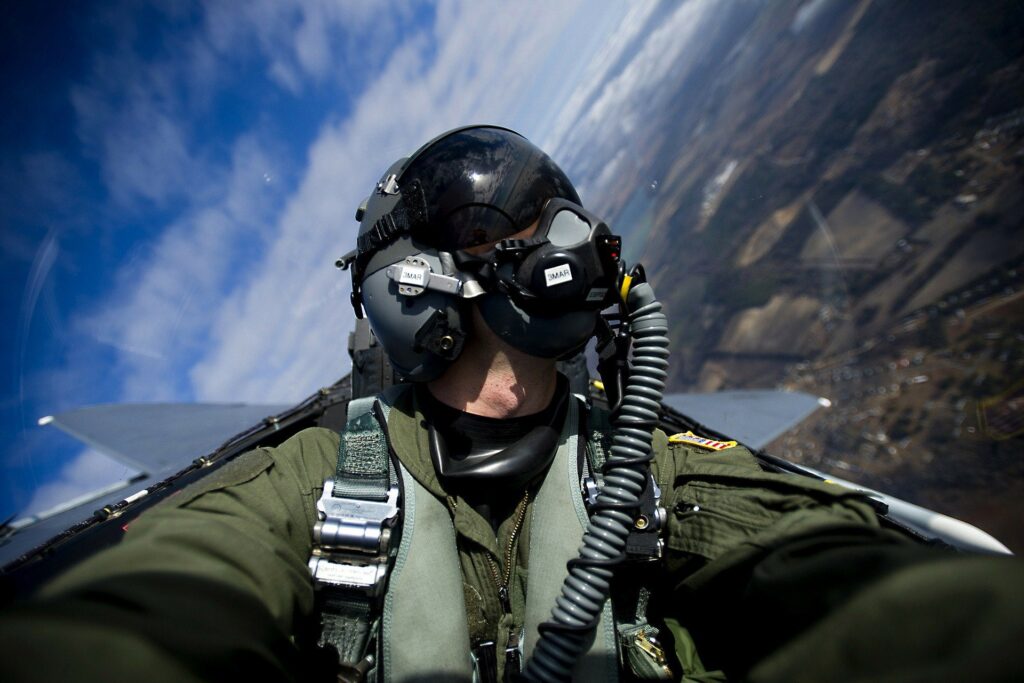
The cockpit comes complete with MFD’s (Multi Function Displays) and a modern HUD (Heads Up Display) bringing all the pilots required information to him in a push of a button on his HOTAS have had the opportunity to personally sit in one of the original F-16 A’s when they visited Malaysia in the mid 1980’s.
We were amazed y its sheer performance and with its ability to pull 9 G’s it easily out turned all the fighters currently available. The whole aircraft was just so futuristic compared to the Mirage III O that I was working on at the time.
The Viper was the first aircraft with a side stick and throttle known as a HOTAS system ( Hands on Throttle and Stick). The Sidestick which originally was actuated by pressure was remodeled to have a small amount of movement as pilots found the pressure only control hard to control. The Viper was a groundbreaking aircraft in both design and performance. It became the yardstick that aircraft were measure against with its unique at the time sustained 9 G capability.
The 30 degrees reclined ACES ejection seat was introduced to assist with the extreme loads experienced by the pilot. The reclining of the seat relieved some of the incredible forces placed on the pilot when max performing the aircraft.
DCS World – F-16 Viper – First Impressions.
My initial impressions of flying the F-16 within DCS have been very positive. Its power and agility have proven to be quite exciting in the PVP player world. The flight dynamics and control of the F-16 Viper feel smooth and precise. The low speed handling is not as good as maybe the F-15C or F-18C in DCS. This is because of design features in the FCS (Flight Control System). The Viper is limited in how much AoA by its computer so it cannot pull AoA like the F-18C. The feature prevents the pilot from pulling to much AoA thus allows it to rate fight extremely well in good hands and regain energy fast.
The DCS World forums complain quite a lot bout the poor performance in the Viper compared to other aircraft that it should out rate easily at around 20 degrees per second. That’s truly fast! I am sure Eagle Dynamics will improve its performance in time and be more accurate. Real world pilots that have flown the aircraft in DCS say it is still quite underpowered compared to the real world aircraft. We have a lot to look forward for sure if this part in updated.
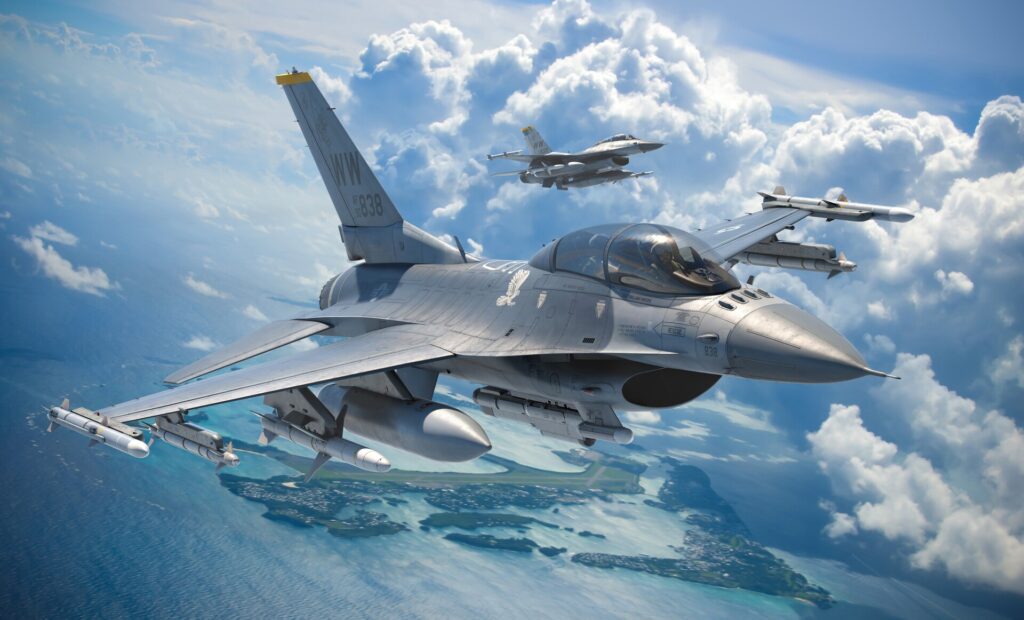
What is a CAT 1 or CAT 3 Configuration?
The F-16 like all modern aircraft have their pitch and roll controlled by Digital ( Digital Flight Control Systems). Why is the Viper they limited? The aircraft when in a dogfight configuration ie. with no wing tanks and just missiles s capable of maximum G loadings. If the aircraft must be limited by performance when carrying heavy bombs and wing tanks because the aircraft structure cannot with stand the additional forces. If your not familiar a 500 Lb bomb at even 6 G becomes 3500 Lbs.
If you multiply this over the load the whole aircraft weight becomes staggering. Of course the wings would simply break with all the extra forces applied to them. They can withstand enormous pressures but their is a limit to what the wings and fuselage can take.
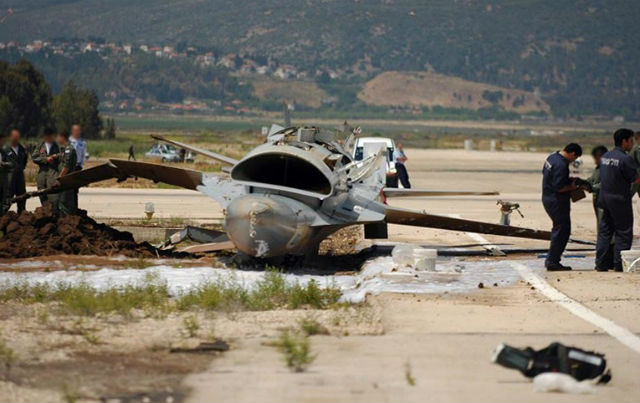
This is controlled firstly by the SMS (Stores Management System) which tells the flight computers the weight and stores attached to the aircraft. The computer can then adjust the performance parameters to prevent a catastrophe. Aircraft like the F-18C flight control system knows by codes programmed into the SMS by people like myself as a Weapons Specialist what is loaded.
Special codes tell the aircraft its configuration and then the FCS determines the safe limitations for the aircraft in flight. When you load up your F-16C for a long range mission with wing tanks and even munitions like bombs, missiles and rockets you will need to change the status from Cat I to CAT III. There is a switch on the left hand quarter panel to do this.
To forget will bring disaster when you pull to many Gs and the aircraft disintegrates. I’m sure there are some who forget and wonder why the aircraft disintegrates in a high G turn when they are carrying air to ground weapons configurations. Be warned before it happens to you!
TESTING THE LIMITS of the F-16.
I have certainly enjoyed testing the limits of the DCS F-16C Viper on the PVP servers and pushing my own abilities right to the limit. The F-16C is reported to be quite a violent aircraft to fly in the real world with its sustained 9G limit. The ability to maintain this aircraft at its correct corner speed which is 0.8 Mach or 350 – 420 knots depending on altitude is very important. In DCS World it seems the corner speed may be above this at possibly 430 knots as reported by some very well known DCS Youtubers like Growling Sidewinder. His experience has shown it does like more around 430 knots and maintains its best speed there.
CORNER SPEED – WHAT IS IT?
It is important if you want to win engagements to know and stay on your corner speed while manoeuvring to be able to to defeat modern aircraft like the F-18 Hornet. The Hornet excels in high AoA manoeuvres and gets its nose around very fast on the merge. You must play to your own battle plan in every aircraft! The Viper requires a good power and speed management to get the best out of it.
DISCOVERING THE CORNER SPEED – F-16 Viper.
Discovering any aircrafts corner speed can be done with available data such as using EM diagrams available on the net. It shows the corner speed for the F-16A is between 350 and 420 knots but we have the F-16C and its not quite the same. Experience has proven the F-16C is more around the 430 knots region. This has enabled me to win a number fights recently that previously have lost in the F-15C.
There are many EM diagrams or aircraft like the one pictured and they are only relevant when comparing aircraft if they are competing at the same weight, configuration and altitude. The F-16 Viper is reported to maintain 20 degrees per second so to turn through 360 degrees at sea level and at 25000 Ft the performance drops to about 16 degrees per second.
It’s important to practice this type of flying on your own in the mission editor I would recommend so you get an amount of muscle memory while pulling on the control stick and looking behind you if the bandit is back there. (Rule 1 – If you cant see the enemy they are behind you!)
EXCESS POWER ADVANTAGE of the F-16 VIPER
The amazing ability of the F-16 to recover its lost energy during a turn fight is legendary! The AF 110 GE Turbofan engine installed delivers 28,000 LB of thrust which has improved to todays engine delivering 35,000 Lb. It is one of the best features the aircraft making its power to weight just amazing at better than one to one in air to air configurations.

If you choose to pull hard on the stick and deplete the aircraft’s energy below the ideal corner speed and by simply releasing pressure on the stick the aircraft will immediately answer your request and start to accelerate with its immense power.
The aircraft in air to air configuration is reported to be able to accelerate vertically and even go supersonic. This is something I have not experienced as yet in DCS as yet. The control of the engine thrust need some care because even at best corner speed the aircraft in DCS will still continue to accelerate to 600 knots and beyond.
Once on corner speed you will likely find you need to reduce throttle a little to booth control the speed and save some precious fuel. It is worth noting the fuel at full afterburner is consumed at an incredible rate so staying in full AB for extended periods will get you to Bingo very fast. Bingo is minimum fuel to get home. This can be set by you in the aircraft.
VIPER WEAPONS ARRAY.
The Viper was as I have already said was designed as a light weight day fighter with the Vulcan M61A1 6 barrel cannon plus Aim-9 heat seeking missiles as well as the Aim-7 Sparrow radar guided missile. It also was able to carry 500 lb and 1000 lb dumb bombs. This later grew with cluster weapons then laser guided bombs plus rockets, maverick missiles and even laser/GPS guided munitions.
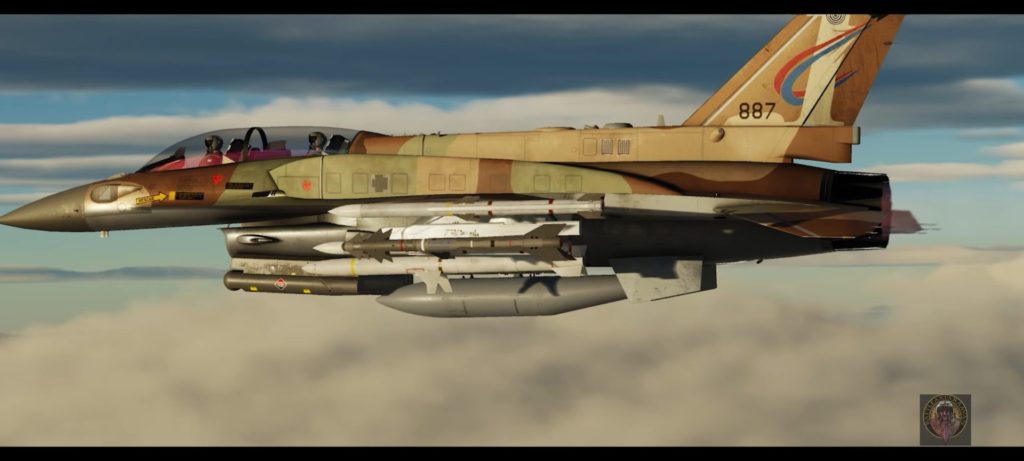
The anti radar missiles were introduced later in the development of the aircraft and it has proven very good in the wild weasel mission. The F-16 has such a wide array of weapons its ready for any tasking. The aircrafts capabilities further increased some years later with the introduction of the AMRAAM, its first Fox 1 missile. This made it a true BVR fighter which has been proven ideal for long range kills.
The F-16 Viper Extreme Capabilities.
In DCS WORLD many pilots discovered they could fire the AMRAAM at 30 – 40,000ft at Mach 1.5 and get kills only previously possible only by the F-14 Tomcat with its Aim-54C Phoenix. The Mig 25 Foxbat with its Vympel R-37 was also capable of such kills. The ability to score kills in DCS like this makes the Viper a dangerous adversary in any environment. It can achieve kills over at and sometimes beyond 50 mile launch ranges if your fast and high enough.
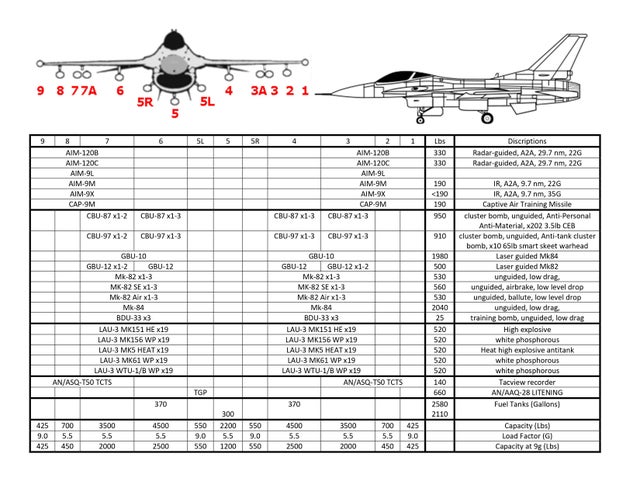
The F-16 Viper is capable of these kills in DCS and launched in TWS radar mode (Track While Scan). This mode does not inform the enemy you have launched a missile. Their first indication is when the missile goes active and searching on its own. This is called going Pit Bull.
The enemy target is not aware they have been launched on till the missile goes active (Pitbull). The F-16 continues to track and engage multiple targets simultaneously with ease. You must be aware if your tracking an F-16 at high altitude and it’s going fast! There may well be a missile in the air without giving you any RWR warning. Its all about situational awareness. You can learn more about Situational Awareness here.
F-16 Viper – LIVES FOR TWO CIRCLE DOGFIGHTS.
Knowing your aircraft’s strengths and weaknesses is crucial for any DCS pilot. The F-16 is designed with the first full fly by wire control system. This system maintains stability and controllability of the aircraft by adjusting the flight controls with 40 inputs per second. Without this assistance the inherently unstable also known as having relaxed stability design and not would be unflyable.
The Mig-21 on the other hand is pure traditional mechanical flight controls with the limitations it brings in limiting maneuverability because of the need for stability so the pilot can control the aircraft. The F-16 is designed as a rate fighter mean it can sustain the tightest radius turn of any aircraft at 18-20 degrees per second.
This makes a two circle fight it strength, this is a nose to tail fight chasing the other aircraft’s tail till it gets a kill. This regime the Viper excels. Take note and discover its advantages. Rate fighting does take patience so don’t panic if its still going over a few minutes.
ONE CIRCLE FIGHTERS NOSE TO NOSE.
One circle dogfighting aircraft normally are capable of high AoA (angle of attack) and they can turn at the merge to get nose position fast. The one circle fighter can turn exceptionally fast so at the merge it is important to keep tally or eyes on your opponent. You have to be ready when it points its nose and weapons at you first!
This usually comes at a cost to one circle aircraft which is the aircraft loses lots of airspeed rapidly making the maneuver. The issue for the aircraft is then to recover energy and speed quickly which they generally use a dive to do. Aircraft like the F-18C and Mirage 2000 are amazing one circle specialists, with the F-18C able to pull impressive AoA and remain absolutely controllable.
Their answer to the loss of speed and energy is to dive. The Mirage and other delta style fighters as well as the Hornet tend to like to rolling scissors vertically downward to keep pointing weapons at you and remain fast enough to do so.
LEARNING THE F-16 Viper.
DCS gives you a full range of tutorials from starting this complex aircraft up to navigation, ILS landings as well as weapons instruction. These are complex informative tutorials and will have you in the air fast. The next step I would recommend is in the Mission Editor with a new jet and go fly it, simply test its flight parameters.
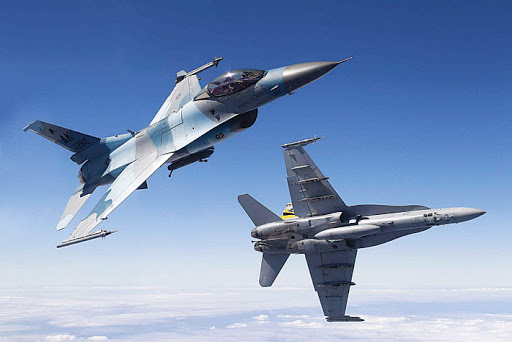
Check out the ability to maintain 9Gs at 350 to 420 knots clean. Add some speed to turns as external stores are added and if you throw a few tanks on then don’t expect to see a lot of Gs. If loaded for a bombing trip or long escort mission with wing tanks significantly reduces turning performance. Plan to avoid air to air combat in these configurations.
You will need to dump tanks and any bombs if you get into a scrap close in. If you can keep the fight BVR with your AMRAAMS then plan to do this first. You may find this article helpful when learning BFM or basic fighter maneuvers. What is BFM?
Author

Brendon McAliece (Aka Gunnie) is a military veteran with 23 years working on Jet Fighters, their weapons systems and ejection seat/module systems as well as munitions and R&D. Involved with flight simulation since the 1980s, he has flown all the major flight simulators over the years.
He is an Australian expat who has lived in Malaysia, UK, Saudi Arabia and more recently Thailand. He is a multi-lingual blogger who loves to share his life experiences here on LetsFlyVFR.com and DreamingGuitar.com, with his lifestyle and Travel experiences Blog plus his Dreaming Coffee website.
Learn More @
DreamingGuitar.com – DreamingCoffee.com – LetsFlyVFR.com
( HOME – BLOG – SHOP – ABOUT )
As an Amazon affiliate I may benefit from qualifying sales.
